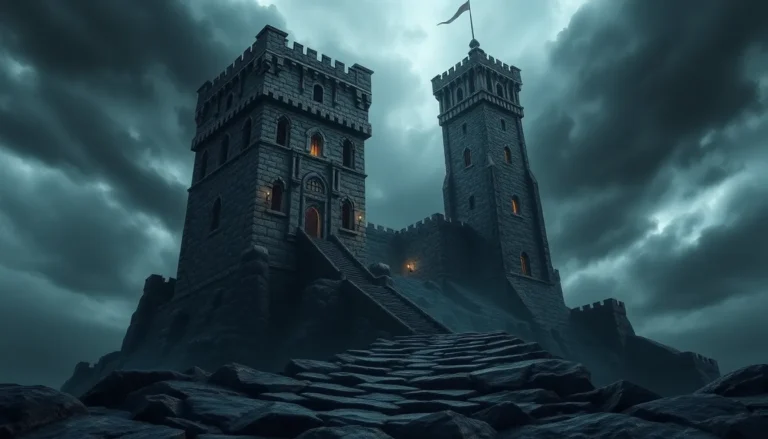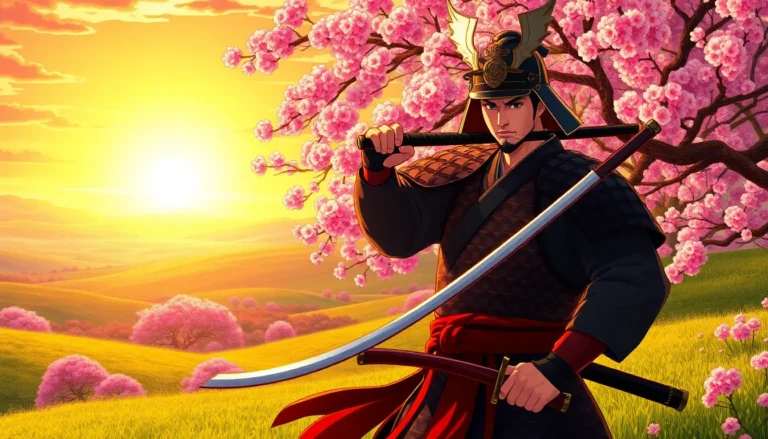Table of Contents
ToggleIn the breathtaking world of Ghost of Tsushima, players don’t just engage in epic battles; they also find moments of tranquility through the art of haiku. These poetic treasures are scattered throughout the stunning landscapes, inviting players to pause their sword-swinging antics and channel their inner poet. Who knew that between slicing up Mongols, one could also ponder the beauty of nature?
Overview of Ghost of Tsushima
Ghost of Tsushima offers players a rich narrative set in feudal Japan. The game’s protagonist, Jin Sakai, embarks on a journey to defend his island against Mongol invaders. Players experience a world filled with stunning visuals, diverse environments, and a deep storyline.
Unique gameplay elements, such as haiku writing, enhance the overall experience. These poetic moments allow players to express creativity while exploring breathtaking landscapes. Each haiku location provides a serene contrast to the game’s intense combat scenarios.
Players can discover various haiku sites throughout Tsushima. Locations often include picturesque areas like cherry blossom groves or tranquil waterfalls. Finding these spots encourages exploration and interaction with the environment.
Haikus play a pivotal role in shaping Jin’s character and his connection to nature. Each composition reflects personal experiences and emotions, enriching the narrative. Engaging in this activity fosters mindfulness amid the larger conflict in the game.
The balance of action and tranquility makes the game captivating. Combining fierce battles with contemplative moments allows players to immerse themselves fully. Discovering haiku locations not only enhances gameplay but also provides opportunities for reflection and appreciation of the beauty surrounding Jin on his quest.
Importance of Haiku in the Game
Haiku in Ghost of Tsushima plays a crucial role in enriching the gameplay experience. Players engage with these poetic moments, creating a unique blend of action and reflection.
Enhancing the Immersive Experience
Haiku writing invites players to pause amidst the intensity of battle. Each poetic moment allows for deeper immersion, encouraging exploration of breathtaking landscapes. Visiting haiku locations reveals breathtaking vistas, prompting players to engage with the environment. The act of crafting verses promotes mindfulness, transforming gameplay into a contemplative journey. Immersive experiences flourish, as players witness the harmonious balance between nature and self-expression.
Significance of Nature Themes
Nature themes resonate throughout the haikus in Ghost of Tsushima. Elements like cherry blossoms and serene waterfalls symbolize beauty and tranquility. Such themes reflect the protagonist’s emotional state, emphasizing his connection to the land. Players often find solace in these picturesque settings, highlighting the importance of nature amid conflict. Additionally, nature serves as a backdrop for Jin’s journey, enhancing the narrative through its visual storytelling and emotional weight.
Finding Haiku Locations
Players discover haiku locations scattered throughout Tsushima’s stunning landscapes. Exploring these areas reveals the quiet charm of nature intertwined with compelling gameplay.
Main Regions for Haiku Discoveries
Regions like Komatsu, where lush forests and serene vistas abound, provide ideal spots for haiku writing. In the Aoi River area, players find scenic locations like blooming cherry blossoms and gentle streams. The region of Hiyoshi, featuring quiet temples and mountain views, enhances the poetic experience. Additionally, players can explore the Tsushima Marshes, where fog-laden wetlands create an atmosphere perfect for reflection. These main areas prioritize nature’s beauty while offering diverse settings for crafting verses.
Tips for Locating Hidden Haikus
Staying vigilant during exploration leads to finding hidden haikus. Utilize Jin’s guiding winds feature to navigate toward points of interest. Listen carefully for auditory cues indicating nearby haikus. Look for distinctive landmarks like large stones or unique trees that signal haiku sites. Interact with the environment, as some locations require players to climb or traverse difficult terrain. Paying attention to the flowing rivers and rustling leaves helps uncover additional haiku locations.
Haiku Locations Breakdown
Players can find various haiku locations throughout Tsushima. These scenic spots offer moments of introspection for Jin Sakai.
Region-Specific Haiku Locations
Regions like Komatsu, Aoi River, Hiyoshi, and Tsushima Marshes highlight areas for haiku writing. Each location features unique landscapes that inspire poetic reflection. For instance, the cherry blossom grove in Hiyoshi provides stunning visuals, while the tranquil waters of Aoi River foster peace. Players often notice distinct landmarks nearby, guiding them toward hidden haiku spots. Utilizing Jin’s guiding winds becomes essential for navigating to these serene sites.
Notable Haiku Examples and Themes
Haikus in the game often reflect nature’s beauty and Jin’s emotional journey. Themes of cherry blossoms illustrate fleeting beauty, while waterfalls symbolize tranquility. These poetic elements enhance the narrative, connecting players deeply to Jin’s experience. Examples like “Dreams drift like petals” evoke a sense of longing and serenity. Each haiku also serves as a moment of mindfulness, allowing players to pause amidst the action and engage with the world.
Conclusion
Exploring the haiku locations in Ghost of Tsushima adds a unique layer to the gaming experience. These serene spots encourage players to pause and reflect amid the action. Each haiku crafted in these picturesque settings deepens the connection to Jin Sakai’s journey and the beauty of feudal Japan.
By seeking out these hidden gems, players not only enhance their gameplay but also engage with the themes of nature and mindfulness. The blend of stunning visuals and poetic expression transforms the game into a contemplative adventure. Embracing these moments allows players to appreciate the artistry of Ghost of Tsushima while navigating its rich narrative.




